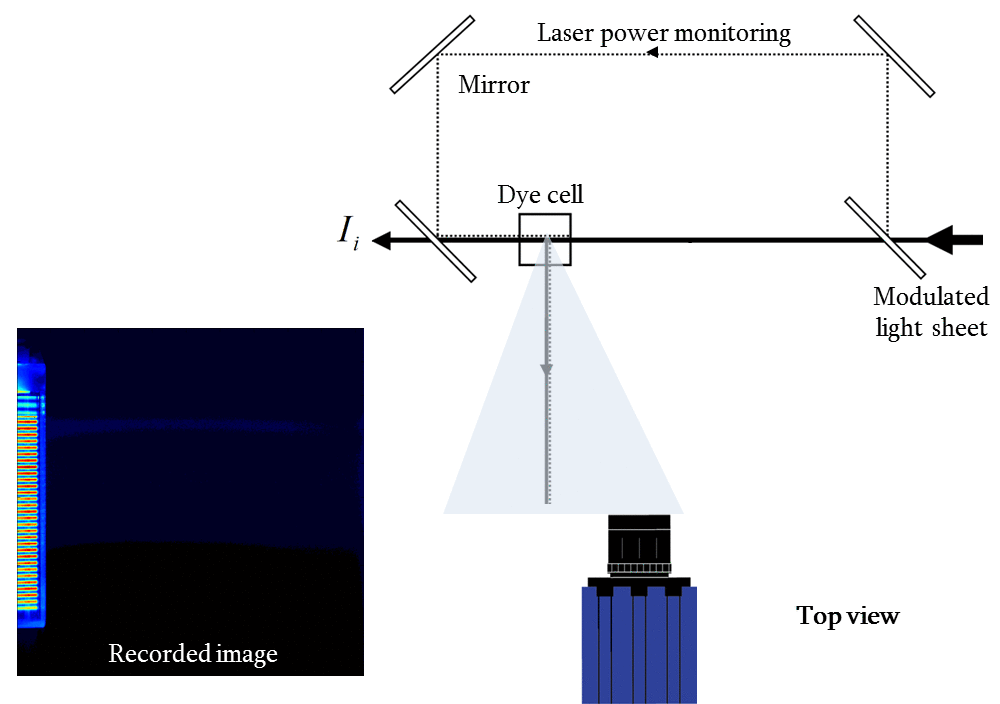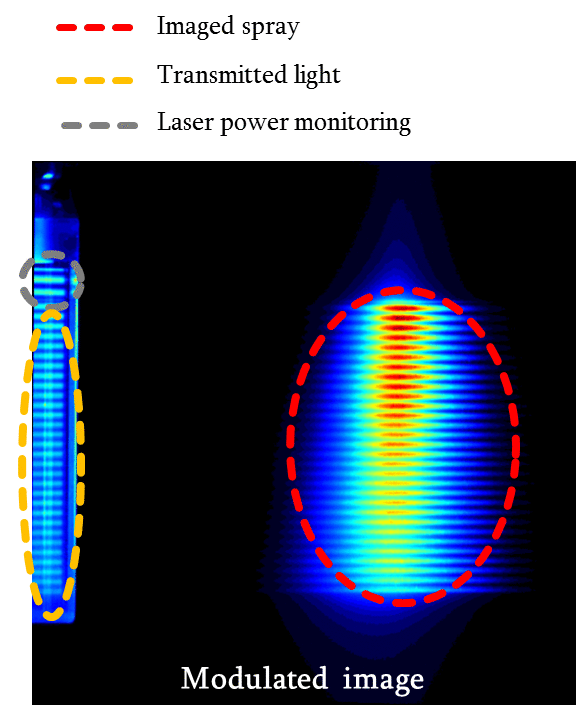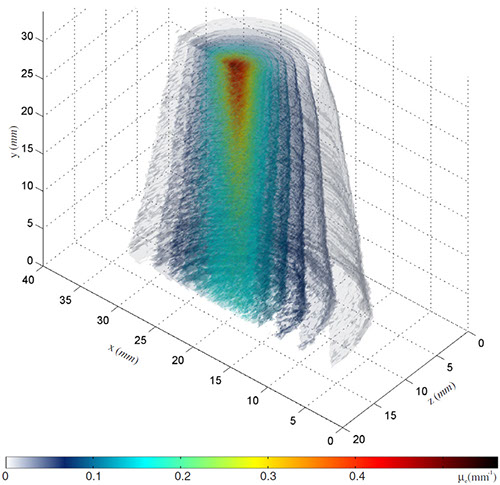

The SLIPI-scan technique aims to measure and visualize the extinction coefficient rather than purely intensity; in a similar way that the well-known light transmission technique does.
The main difference is that the SLIPI-scan technique aims to locally measure the extinction coefficient throughout the entire volume of the sample.
If one consider the medium of interest to be divided into a number of homogeneous voxels, each of them characterized by a certain extinction coefficient. By scanning through the sample using the SLIPI technique, the scattered light intensity from all voxels can be measured.

To compensate for light extinction, a fluorescing cuvette is placed on the other side of the spray medium. This allows to measure how much the light was reduced at a particular plane.
With this knowledge one can compensate for the extinction for each layer and compose a 3D reconstruction of the sample.
The example here shows the 3D imaging of an optically dense spray probed using SLIPI-scan. The dimensions are in (mm).
The symmetry of the spray structure around its central axis can be observed. Also the droplets density is observed to be higher in the center than on the spray edges.
One key aspect of the technique is the correction for light extinction effects.